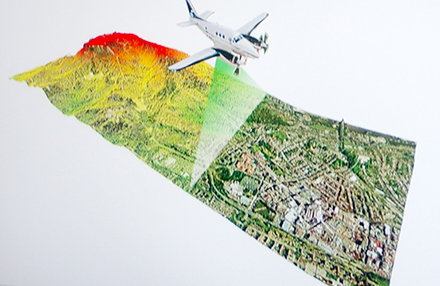
Drones, scanners, sensors and satellites are replacing roles typically performed by people, in a research program led by Scion in Rotorua. Source: New Zealand Herald
This fifth “Growing confidence in forestry’s future” (GCFF) conference was held in Rotorua to cover the highlights of the NZ$5 million GCFF research program to date.
When the program was launched in 2013, former Scion chief executive Dr Warren Parker and former Forest Owners’ Association Paul Nicholls said it was setting out to “increase the productivity of and value from our existing and future commercial forest estate through the development and application of world-leading technology”.
The joint initiative between Crown Research Institute Scion, universities, the forest growing industry and the Ministry of Business, Innovation and Employment aims to help New Zealand double forestry export earnings from NZ$4.7 billion to NZ$12 billion by 2022.
The program will wrap up at the end of next year.
One of its leaders, Scion’s Dr Peter Clinton, said the program had faced “the classic hurdle”.
“How do we go from where we are to where we could possibly be? It is no man’s land.”
One of its biggest focuses has been applying LiDar imagery (Light Detection and Ranging) in New Zealand forests.
“LiDar allow us to view above the canopy and cover large areas very quickly. We could not do that before.”
The size and shape of individual trees can now be outlined from the LiDar images, using remote sensing technology and satellites also.
Very large numbers of trees can be assessed at one time when LiDar technology is carried aerially by drones, planes or helicopters.
LiDar doesn’t capture the lower canopy, so handheld 3D scanners are also being developed for use from the forest floor.
“Together the two sets of images give us better models of each tree. From them, we can understand a lot more about the wood quality and what’s inside.”
Dr Clinton said using LiDar and scanners was much faster than traditional methods where workers would use a diameter tape and a height pole to measure tree shapes and sizes.
“We have been able to measure plantations several times a year, rather than once.”
Biotechnology is also a core part of the program, with the development of a “forest phenotyping platform” in central North Island forests.
A phenotype is the physical result of a gene.
“Some tree genetics will have better physical outcomes in certain conditions in New Zealand,” Dr Clinton said.
The platform means genes can be selected to improve the final timber product and to protect trees against disease and harsh soil and weather conditions in New Zealand forests.
Another GCFF research leader, Dr John Moore, also works part-time at Timberlands forest management company in Rotorua.
He said feedback on the program was positive so far.
“The feeling is that there are a lot of unanswered questions out there and industry leaders are very excited by what they are seeing.
“The research focuses on what is needed rather than research for research’s sake.”





